Boston Red Sox principal owner John Henry created quite the stir in Spring Training by suggesting that the team that he’s owned for almost 15 years has overemphasized analytics when making major decisions. The 2015 season was a major disappointment for the Red Sox, resulting in giving up more runs than they scored despite playing in Fenway Park – a nicer stat than any of their statistical pitching categories where the staff finished next to last. “I was shocked,” Henry said. “I was shocked at how bad we were last year. To me, it was shocking. Maybe it wasn’t to people on the outside. But you can’t have the type of talent we had on the field or at least attempt to put the kind of talent we thought we had on the field and get those kind of results and not be looking for answers.” And so he went “under the hood,” as he put it, and make his changes: starting off with the firing of general manager Ben Cherington.
Cherington’s large expenditures on free agents Pablo Sandoval and Hanley Ramirez did him in, as did his trade that got him starting pitcher Rick Porcello with a 4 year extension worth over $80 million. Porcello’s decent 2014, which wasn’t much different from his 2012 or 2013 according to wins above replacement, did not warrant giving him such a contract but Cherington and his front office felt the gamble was well worth it because of the pitcher’s young age and career trajectory. But still, the rare 26 year old free agent accepting an extension a year before free agency must have meant someone overpaid, which of course they did. Furthermore, the Red Sox offered a lesser contract to proven ace Jon Lester when he was also a free agent to be on the basis that that’s what their computerized database Carmine suggested as fair, raising questions all around. Lester had many productive seasons with the club and Porcello never as much touched the rubber for Boston, proving how much they once did listen to numbers. Agreeing to deals with both Sandoval and Ramirez were repetitive at best, since they were both third basemen with numerous physical ailments and off field issues. But Sandoval’s historic postseason performance and Ramirez’s resemblance to Manny and past history with the organization were too much to pass up for Ben, even if it meant switching positions and costing your defense which numbers tend not to care about. These three moves were the final three nails on his coffin, as even a novice could tell you one or two of them were simply bad ideas. To Cherington’s credit, he did win New England a championship in 2013 after assembling a roster full of veterans that took the mold of the city it played in – rallying around the horrific events that happened there that April and almost certainly didn’t deserve to fired for last season alone. The improbable World Series win was a testament to players that wanted to play and represent Boston the best they could and they did. Cherington was also a loyal worker, one of the classiest in the game and left the franchise in healthy shape going forward through developing a talented young core that will assuredly be part of his legacy. Henry after all, did say just 37 days before, that Cherington was “going to be the general manager of this club for a very long time, so you have to blame ownership as much as you can blame the general manager.” This was before Dave Dombrowski became available and his long relationship with Mr. Henry came to light.
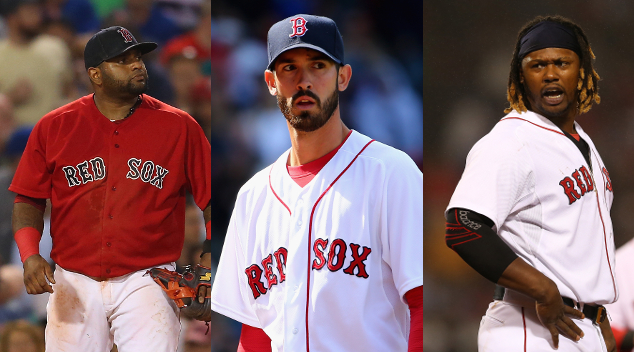
Dombrowski has long been one of baseball’s most stable and respected figures, winning a ring of his own with an expansion team in the 90s. In fact, when Henry purchased the Marlins in 1999, he did so on one condition: that Dombrowski stay with the organization as GM. Neither would have a very long stay, as they moved on to better situations, Henry with the Red Sox and Dombrowski with the Tigers. The two did, however, like to take their crew with them. Henry’s Red Sox traded for Marlins products Mike Lowell and Josh Beckett while Dombrowski brought Miguel Cabrera (a heist) and manager Jim Leyland to Detroit. When they finally reunited this past August in an introductory press conference naming Dombrowski president of baseball operations, careful viewers and listeners could begin to see Henry distancing himself from sabermetrics. “I guess because we brought in Bill James early, I think there has been an overemphasis in the media about the level to which we perform data analytics. We have terrific people in that area, but it’s not the overwhelming basis of our philosophy. It’s more of a tool. It often goes beyond a tool, it sometimes drives us in a certain direction. But it hasn’t been the driving force.” Chairman Tom Werner added, “too much has been made of a ‘sea change, our focus has always been about winning. In the end, it’s all about player evaluation and character . . . We’ve talked about it and we think there’s a lot more in common that perhaps has been suggested.” Dave Dombrowski summed it up best, “We’re in a spot in today’s world where the perception is you’re either analytical or not analytical,” Dombrowski said. “I don’t believe that at all. The reality is you use all the information you possibily can to come to the best decision that you can. So we didn’t have as big an analytic department (in Detroit) as some other organizations do — for various reasons. But I did have people in our office that would give you any analytics that you wanted to get.’ “When you’re in my spot, what you do is, you combine all of this. You combine statistical information, your scouts’ opinions, your own instincts about players, you find out about makeup of players, their work ethic — and you make the best decision you possibly can. And if there’s some edge that we can get from a statistical perspective, then you should use it.’

It’s true, the Red Sox are changing. But why does it have to sound like they’re taking a step back? Yahoo Sports’ Jeff Passan, a brilliant writer on his own right, titled a recent scathing article on this issue, “Wicked mistake: owner admits Red Sox overly relied on numbers” months after writing glowingly about Dave Dombrowski and how he had the chance to “change the calculus” on how front office executives get paid since they “make a fraction of what their employees do, one of the rare jobs where bosses are compensated so disproportionately with those they hand-pick.” I agree with Passan on that latter but I also agree with owner John Henry when he says baseball is “a complex, dynamic living thing that has to really be nurtured on a day-to-day basis 12 months out of the year” and “If there’s one thing that I’ve learned, it’s that human beings are notoriously bad at predicting futures.” What is wrong with an owner letting his own hire change how his organization does things? Yes, the Red Sox have won three World Series this millennium but do you know how many division titles they’ve won the last two decades? Three. How many times have they finished in last place since 2012? Three again. Also, if I’m investing hundreds and hundreds of millions of dollars on a baseball team and I see organizations like the Giants and Royals winning four of the last five big prizes, with the Cardinals being the other, I definitely reconsider what I’m doing. The Giants and Royals aren’t the most technologically savvy in the Major Leagues and get it done the right way. Howard Megdal’s new book on St. Louis chronicles how they achieved the perfect harmony between tradition and Moneyball, essentially showing that they can indeed co-exist. Many of the major rebuilds in New York, Houston and Chicago can be attributed largely to proper drafting and player development; two processes that cannot be accomplished or replicated with a computer alone but with coaching and other methodologies. When you’re watching high schoolers, you’re not going to be able to manipulate their stats. I always like to say teams have won championships long before any of us were here and will continue to win a variety of ways. It’s baseball, not the stock market although sometimes it feels like it is. Even if you’re more inclined towards that type of business, you’d know that diversity of opinion is important. Different voices and expertise can be a positive when you disagree about players. If it were up to experts, Dayton Moore and Ned Yost would’ve been replaced years ago. Those on the opposite end of the scouting vs analytics spectrum are getting shut out because they share similar philosophies as a David Dombrowski and those before him. Peter Gammons reported this week that even Theo Epstein, the godfather of all GMs, was subjected to this when he was told in 2011 that he didn’t rely enough on analytics as the reason he could no longer head the Red Sox. Maybe it’s because he went to law school with a degree in American Studies or that he’s open enough to name baseball lifers like Joe Maddon manager as opposed to someone with no experience as is the norm now, but that’s ridiculous. This debate has to shift to whether or not teams like the Red Sox have done enough to expect major improvement in 2016.
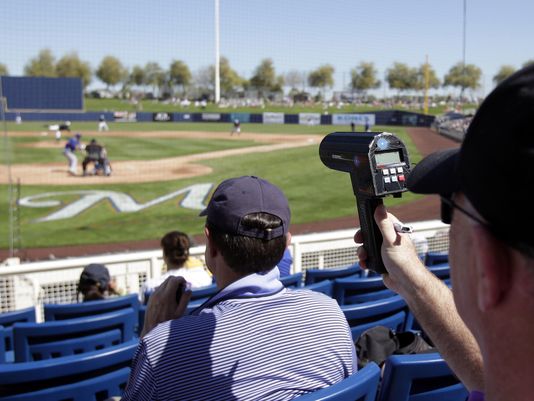
My connection to the Red Sox goes back to when the retired Larry Lucchino asked me for scouting reports on each of their top 20 prospects. It was exciting to be handed that type of responsibility and I obliged happily. Since then, I’ve welcomed Mr. Dombrowski to the organization and gave him my suggestions for the offseason. I enjoy this fun type of exercise and my creativity is tested by marquee franchises with deep pockets and resources. Interestingly enough, more than one of these ideas turned into real acquisitions with the most obvious being David Price. Price was an opportunity to acquire an ace without forfeiting a draft pick and the bonus pool that comes with it, with the negative of major free agent cost. $200 million is a lot to put on one arm but Price’s looks to hold up well for a good duration of the contract thanks to his size, durability and good mechanics. He has pitched the majority of his career inside the AL East and the Red Sox are familiar with what he brings on and off the field. However, just because this was my the first suggestion didn’t mean it was my favorite; I slightly preferred filling the rotation with two or more capable starters instead and strengthening other areas as you’ll see shortly. One intriguing possibility was trading for Julio Teheran, someone who was widely seen as a front line option before his trouble with lefties and then going ahead and signing Kenta Maeda, a two time Sawamura Award winner. Teheran is only 24 years old and is controllable for the rest of his bought out arbitration years, and Maeda, 27, can succeed in the States with his superb control and slight frame that hasn’t seemed to stop top free agent starters like Zack Greinke and Jordan Zimmermann. The going rate for pitchers worse than Maeda is out of control with some of the fault going to the Red Sox following Porcello and chances were you could get him for less with the posting fee because of clubs not wanting to pay it, instead when he’s unrestricted next offseason. I was in disbelief with what the Dodgers got him for because personally, I was willing to offer 4 years at $40 million guaranteed plus the $20 million to his team. Picking up Clay Buccholz’s option was the right thing to do and I saw there being genuine interest in him from teams that like him but wouldn’t have wanted to pay a four or five year deal this winter. The thought was dealing him for another player in his walk year and change of scenery/health plagued guy like Andrew Cashner or Gio Gonzalez.

One of the more exciting propositions I had to offer was also one the least likeliest and more rewarding. There are few trades in baseball that can change the DNA of a franchise like that of a young ace, seasons before their own mega contracts. We saw it with Pedro when he got dealt from Montreal to Boston in 1997, after pitching to 1.90 ERA with the Expos. The time to try and acquire Matt Harvey was now, and not for the reasons some suggested. Harvey, a Connecticut native, grew up in Red Sox territory, came off the best campaign ever from a person in his first year back from Tommy John Surgery and should be in the top five of the Cy Young voting this year. The early forecast on the 2017 free agent market is that it has only one premier starting pitcher in it in Stephen Strasburg, and while Stras could be a target then, it is already beginning to shape up to be the offseason of Matt Harvey. The cost then in 2017 could be both Mookie Betts and Xander Bogaerts instead of just Bogaerts this winter and a complementary piece like Rusney Castillo to go along with half of Castillo’s salary being eaten. Bogaerts and Castillo solved the holes in short and center for the Mets and there was the ability to give up more, if needed. Again, this was proposed at a radically different time for the Mets, when’s the proposition of re-signing Yoenis Cespedes seemed implausible. With the savings and opening in the outfield, an outfielder like Alex Gordon would’ve given the Sox one of the best defensive outfields in baseball. Bogaerts’ power could take longer to develop and last year’s Silver Slugger at shortstop is not quite in the category of a Correa or Machado.. If Harvey did not materialize, like it did not, I planned to move on to Zack Wheeler, as he is the odd man out in Queens with a Jackie Bradley Jr. return expected. Jose Fernandez was the second card up my sleeves and the Marlins were facing a very public rift with Scott Boras at the time. Unlike the Mets, the Marlins were less defined in what they needed on their roster, giving me more leeway in who I wanted to choose and keep. Henderson Alvarez and the non tender market was another variable worth monitoring for me. The price in terms of pure volume of prospects stood to be a little higher for Fernandez, and like Harvey, this was a home run play if it could’ve be done.
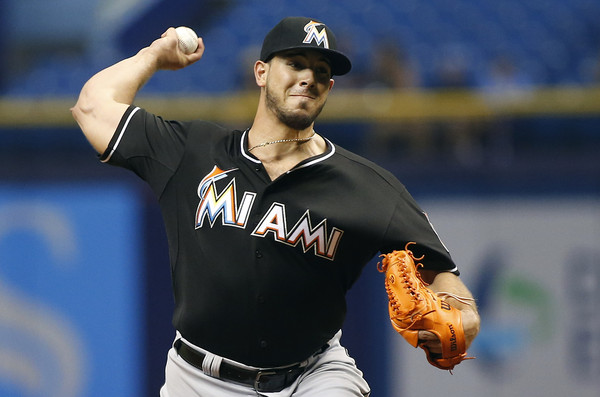
The next order of business on the table was figuring out what to do with Pablo Sandoval. I believe Hanley Ramirez can be salvaged and that playing out of position had to with much of his struggles, but with Pablo it is more uncertain. The Brewers and Reds were both rebuilding teams in the tough NL Central with bigger burdensome contracts in Ryan Braun and Joey Votto. Braun, to the best of my knowledge, was available at the July 31st deadline and is starting the extension phase of his 5 year, $105 million contract that gets smaller over the life of the contract. If we did something similar to the effect of what I discussed with Rusney and took on $40 million of Sandoval’s money, it’d leave Milwaukee paying close to $10 million annually for a position where they have little to no depth. If Braun was a free agent, he’d almost certainly get a similar deal and since we’re taking on additional obligations, a reliever with elite strike out levels like Will Smith could be added. On the other hand, Joey Votto’s situation is different since there hasn’t been much inclination on Cincinnati’s part. The Red Sox had a unique opportunity where not a lot of organizations have the means to add a Votto in full. Like Braun, Votto is set to receive a substantial raise in 2016 and will start getting paid $20 million and over for the next eight years. The Reds would’ve been wise and accepted the remainder of Panda’s $80 million to in effect save $100 million, with of course, major incentive added on to it. He might be the best first baseman in the game and the smartest for that matter, a recipe that lasts once you have something to play for like they do here. Adding one of Votto or Braun bolsters a lineup that needs to keep improving and is plausible if you can get Sandoval to be involved in either.
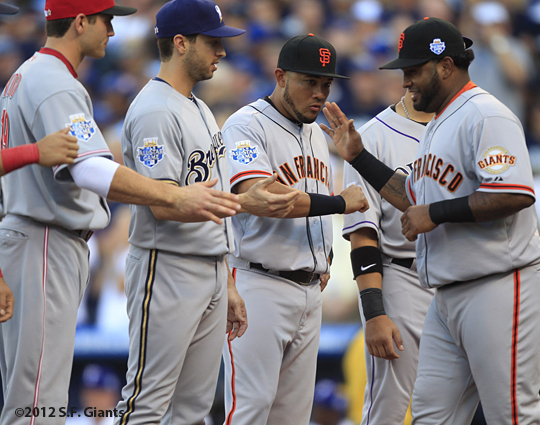
Smaller trades provide big impacts too – Brock Holt and Wade Miley were placed in this category. The second move that came to fruition involved Wade Miley exchanged for set up man Carson Smith. The Red Sox even got another piece, Roenis Elias, and the final product was roughly the same as the deal I laid it out. Smith is excellent for lots of reasons if he can stay healthy and was exactly the type of piece you could pry from a new regime looking to make trades and an ultra active Jerry Dipoto. Dipoto did spend a few months in Massachusetts after his divorce from the Angels, got a look around the place and made friends in the organization. Holt’s versatility fit well with the Athletics, for example, and the A’s, in typical A’s fashion, have a stable of interesting athletes like Jesse Hahn and Kendall Graveman while Sean Doolittle is not completely out of the question. If the Smith deal didn’t happen for whatever reason, I would’ve looked to Pittsburgh and their small market to trade Miley there for Mark Melancon, the former Red Sox who never seemed to take off. I was willing to take a flier on a Pedro Alvarez to get them to really do it, and was surprised how quickly they got rid of him. The Indians also had a wealth of underrated pitching in their bullpen that no one seems to talk about like Zach McAllister and Austin Adams.
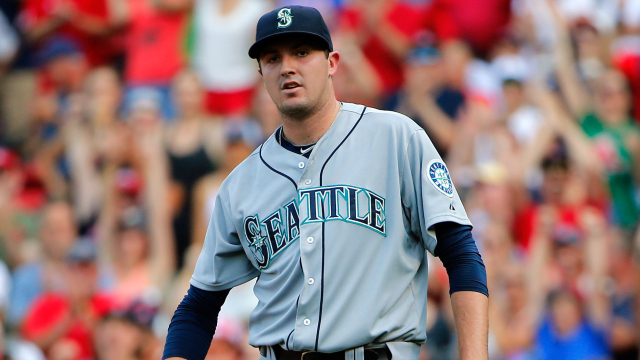
I can’t say for certain Dombrowski and Co. have a roster that can run away with the division, but I do think they’ll be competing for the top spot. If I was a hitter, Craig Kimbrel is right there with pitchers I wouldn’t want to face but I can’t help think the package that was used to get him might’ve secured a number two starter. Joe Kelly fits the mold of a late inning force and would’ve been used in that role. Bullpens make the difference in the playoffs, as this former Tigers GM knows, and it must’ve been nice to finally get the best. Rick Porcello stayed and has enough variables on his side to justify keeping him, especially when value is down. Sonny Gray and Carlos Carrasco were two names I couldn’t see moved but were frequently discussed with most fans. In a critical offseason, the Red Sox only made five additions, give or take, but outfielders Chris Young and David Murphy on a minor league deal were nice depth for the team. Young is made for the ballpark, given his tendency to pull the ball, so it’s probable he’ll disappoint anyway. In David Ortiz’s farewell season, he remains the Red Sox best hitter. That, for me, is a problem and is the reason why I looked to improve the offense in my plan. It’s truly been remarkable seeing him reinvent himself as a DH, not striking out 100 times since he’s turned 35 in an era where everyone does and retaining that power. Regardless, the 2016 season for the Boston Red Sox just got more interesting in the wake of John Henry’s comments as if it weren’t already. Will success in Beantown be seen and credited to something other then data and if/when that happens, how will the industry respond? Will highly analytical teams have to beaten down the way John Henry and the Red Sox have to make the change? When the hedge fund manager and controller of Liverpool says to use it at your peril, do you listen? The message has been sent and and the answer likely won’t come overnight.
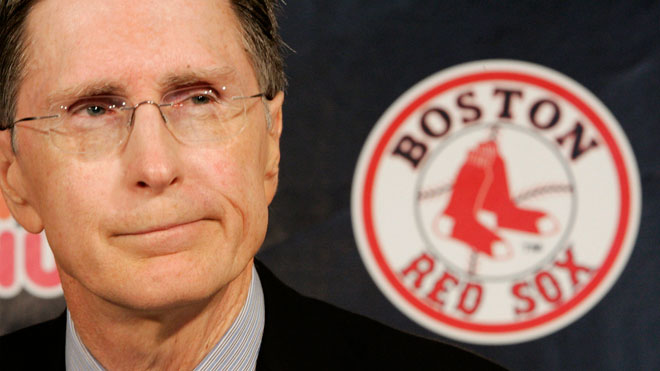

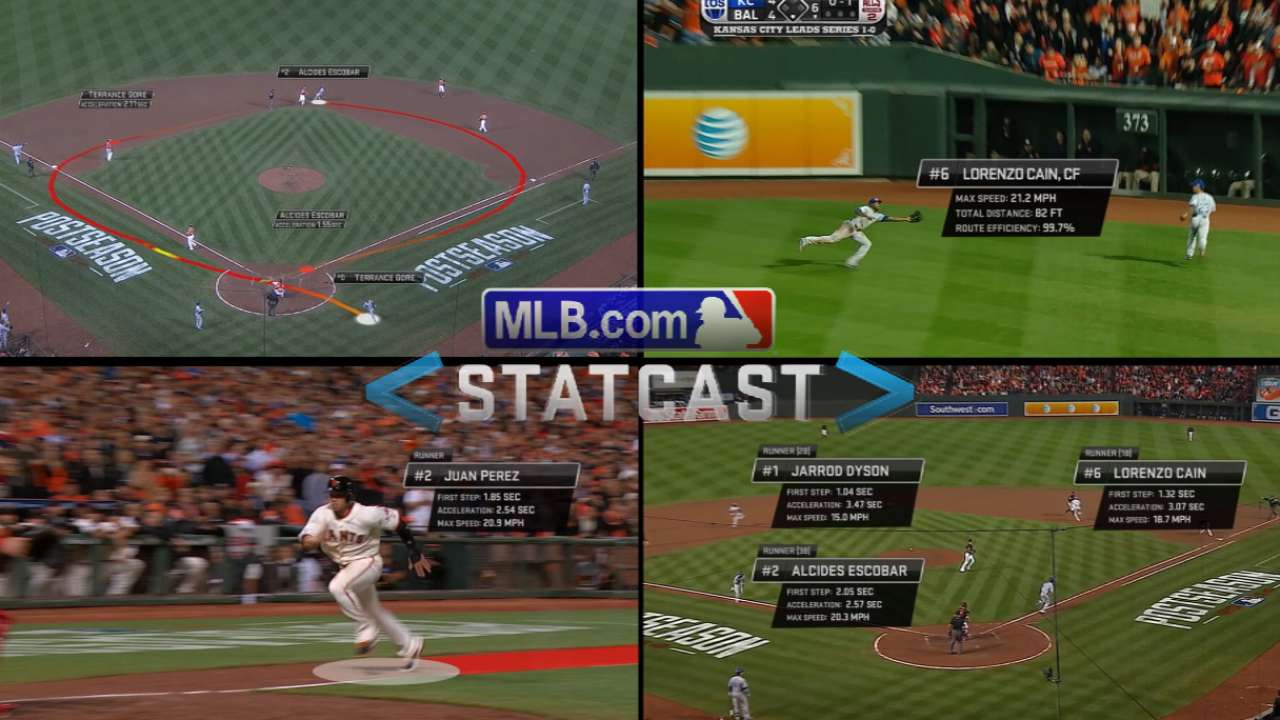
I agree that Hanley is not the issue. He was hitting at an MVP clip when he ran into the OF wall and hurt his shoulder. Even if he struggles at IB, he will be worth the $$ as a DH in 2017-18. However, you missed the obvious fix for the Panda problem. The Sox should have insisted SD take Panda as part of the Kimbrel deal. They could have taken back Upton’s 2 yrs and 34 MM as a 4th OF instead of spending 14 MM for 2 yrs of Young. If they had to throw in $$ to make it work so be it. Either Uribe or Freeze would have been a cheap short term bridge to Devers with Shaw as a LH bat in the !b/3b mix
LikeLike
Thanks for your comment! You are right when you say the Padres might have had interest in Sandoval since they did when he was a free agent, however to say that it was an obvious trade is a stretch. The Red Sox surely would have included him in the deal if they could, although I don’t see why you’d want to trade him for empty value. If you took a look at my packages, I wasn’t looking to simply dump the contract but use it to get another version of it that probably is more likely to contribute. Devers will not be here this season or the next as he’s only 19 and has yet to play above above the South Atlantic League and will have to spend at least a year in high A Salem so the proposition of Freese or Uribe for just 2016 was always unlikely.
LikeLike
Uribe or Freeze could have been had with a cheap option for 2018. Most Boston scribes (see multiple stories by both Carfado & Abrahams) think the Sox would have to not only pay a large portion of Panda’s salary but also throw in a prospect to get some one to take him. Preller needed those 4 prospects to re-establish his credibility with SD fans and still has no 3b. I find it hard to believe that DD could not have worked out a way to include Panda.
LikeLiked by 1 person